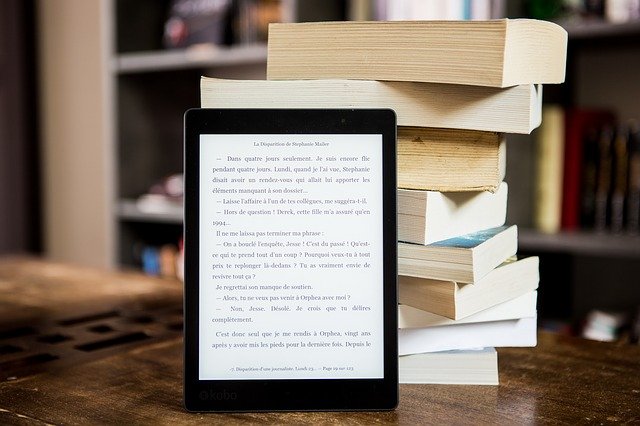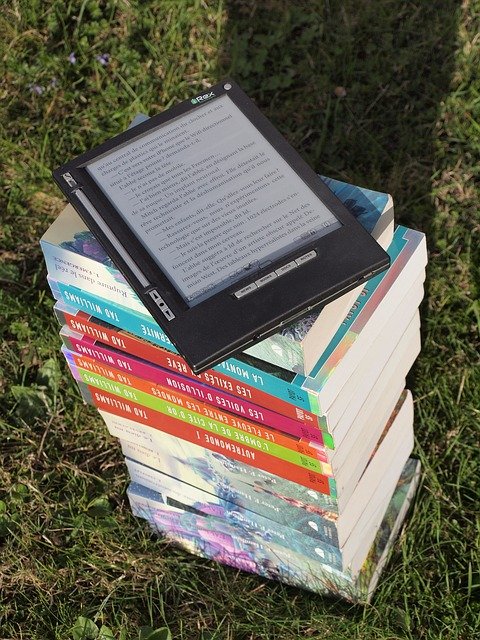Digital text: what is digital text, main characteristics, structure and types of digital text
Contents
What is a digital text?
As digital text we can understand any type of text or content that is written and disseminated in the digital environment, reason why the reader to whom it is addressed can be located anywhere in the world, because it uses the Internet as a means of circulation and this expands to a maximum extent the places to which it is possible to reach. This type of texts can involve several purposes, among them is to inform, express, promote or communicate.
Digital texts are part of the types of texts within the written literature. However, it is important to note that it is not distinguished from literary and non-literary texts only by the medium used for its dissemination, but it is necessary to consider some other key aspects that we will see below and that facilitate their distinction. They are texts that may or may not have literary or non-literary purposes.

On the other hand, it is worth mentioning that the digital text is that which is produced directly in this type of format through platforms that allow it, while the digitized text includes texts that after their physical format are presented in the virtual environment through scanning directly, photographs, transcription, etc.
Main characteristics of digital texts
It is important to note that the digital text is a relatively recent category, since it was born from the hand of technology and is a classification that has made its way into the world of literature in a short time. However, given its importance today, it is necessary to consider the following points to distinguish it:
Dissemination medium
Undoubtedly one of the most important features of this type of texts has to do with the medium through which the content is disseminated and it is the digital environment. Thus, if the reader wants to access a digital text, it is necessary to do it through the Internet connection.
The means of dissemination is crucial for this type of text, since it is an environment that allows consultation at any time, as well as allowing it from anywhere, since the minimum requirement is to have the connection. To this it is necessary to add that there is content reserved for certain groups, forums or accesses, even so it will be possible to access it if the conditions are met.
Multimedia resources
A faculty of this type of text has to do with the possibility of adding multimedia resources to its content. This refers to the incorporation of resources such as videos, photographs, emojis, gifs, among other resources that allow presenting a much more dynamic text through which the reader’s attention is kept through the entertainment it can generate. This, considering the subject matter and the type of content.
Possibility of interaction
Digital texts open the door to interaction. In this sense, the reader is also a user who has the possibility of generating interaction through comments on the text and even through the dissemination at the time he decides to share it, either by social networks, forums, pages, etc.. This, ultimately, increases dissemination through interaction with readers.
Content and hypertextuality
When we talk about hypertextuality, we refer to the capacity of a text to connect with other resources through which the reader or user can go, inside or outside the page. Thus, the text allows the reader, if he/she wishes, to go deeper into other aspects.
The hypertextuality of the digital text appears through incorporated links or hyperlinks that are highlighted and that by placing the cursor on them facilitate the entry to another resource of interest to the reader. They are often placed in topics that are attractive to the reader according to the initial content.
Updating the content
Another important feature to consider in this type of text is that, due to the format and medium in which they are disseminated, they can easily be subject to updates. In this way, the text can prolong its validity in the media by updating, when necessary, its content, date, data, among other aspects that need to be revised.
This aspect is important because it allows the reader to guarantee updated information regarding the topic he/she is reading, if possible, besides being an important element for a better positioning in search engines as a requirement to appear in the first results and, to this extent, to be able to reach a larger number of readers.
Digital text storage
Because of the format that can have this type of texts, the storage of them can be very simple and practical, which facilitates the creation of large compendiums of digital texts in information bases that allow access when necessary. In addition, not only a user can store this type of texts for individual use, but there are platforms with shared access in which large amounts of texts can be stored.
Structure of a digital text
The form in which the content is presented in this type of texts can have a great variety of forms, reason why it is not possible to identify a unique format that serves as a basis for digital texts. However, it is possible to recognize some elements that may be present and their modalities, let’s see:
Classical composition
This type of initial and frequent structure comprises the three elements of development of a text, based on an introduction, the development or content and the conclusion, or in this case presentation, knot and denouement. In this sense, the text follows the growth of tension to culminate through the conclusion or denouement.
However, in the case of digital text it is important to be very careful with the way in which the structure is handled, since if unnecessary text is added, the reader can easily close the site and not read the digital text. This signals a need to present the reader what he/she is looking for through precise and, if it is the case, enriching content for his/her consultation.
Inductive structure
This is another path that digital texts can take, since through this the narrator describes one or more cases that allow him to show a theory or a position on something. It is a structure that continues with the narrative tension and, according to the theme being developed, can keep the reader’s attention.

Types of digital texts
Now, we have a variety of content that can be developed in this type of texts and to this extent, several modalities or types through which it can be done. That is why we can identify the following types:
Unimodal digital text
It refers to all those digital texts that are digitized by means of a special processor for it, reason why we find them with the acronyms of the extension as pdf, doc, rtf, among others. They are distinguished mainly because they contain a digital support.
Multimodal digital text
On the other hand we find the multimodal digital texts in which it is necessary to use online platforms or editors, also known as multimodal editors, which incorporate several functions. In this case we find multimedia with texts that have different functions and resources such as audio, video and image, and hypertexts with the connection through links or added links.
Intertext
Finally, we find intertexts, which allow communication with an exchange of content. This gives the reader the possibility not only to access the content, but also to become an important part through interaction by generating content as well. In this way you can use resources such as chats, photos, social networks, among others.
Hypertext
Finally, there is hypertext, a text format that provides a non-sequential structure through which the reader can access various sources of information that allow him/her to go deeper into the information presented or to access other complementary contents, according to the author’s intention. Thus, hypertext incorporates links that allow a navigation mode to be followed according to the reader’s or user’s interest.
To learn more about other types of text, as well as their classification in the literary world, we invite you to continue browsing our section dedicated to this literary field, where you can find much more interesting information.
